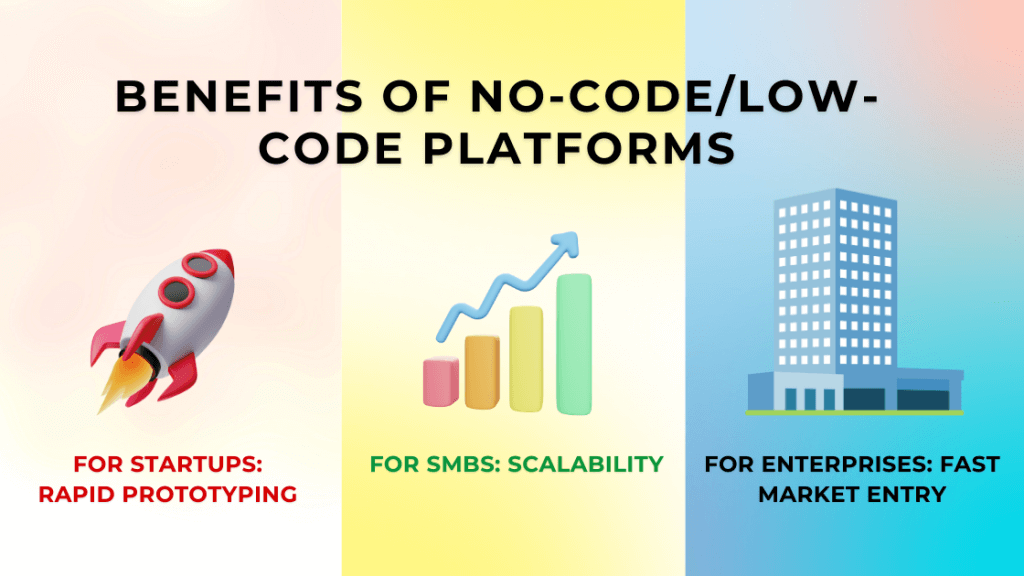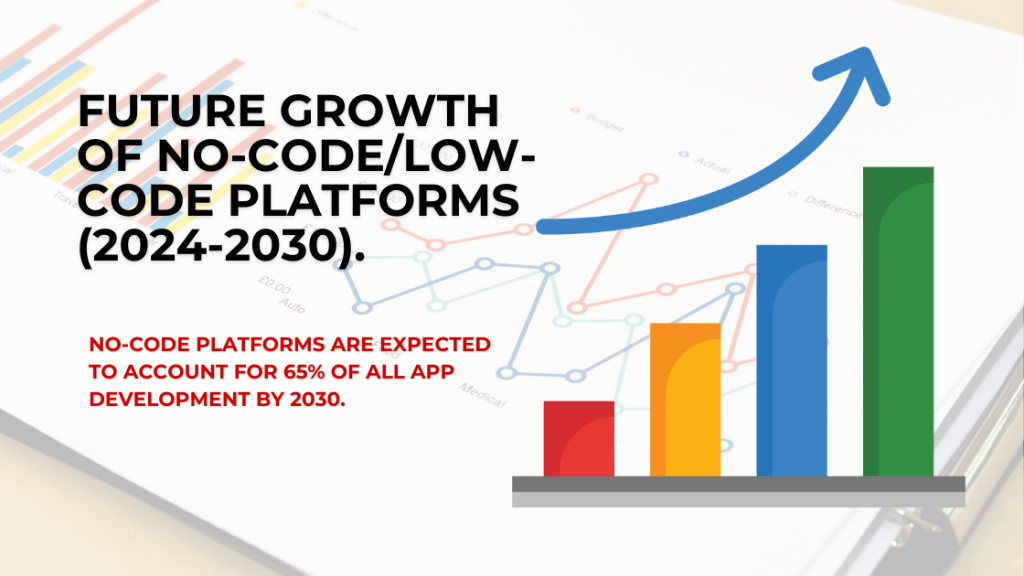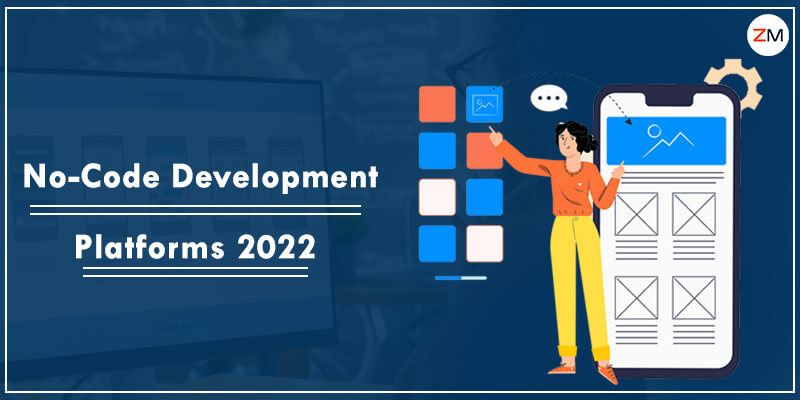The Future of No-Code and Low-Code Platforms: Empowering Non-Developers to Build Tech Solutions

Introduction
The rapid advancement in technology has paved the way for extraordinary innovations, including no-code and low-code platforms. These revolutionary tools are empowering non-developers to build powerful tech solutions without writing a single line of code. Whether you're a startup founder with a groundbreaking idea or an enterprise looking to streamline processes, no-code and low-code platforms are transforming the way technology is developed and deployed.
In this blog, we'll explore what no-code and low-code platforms are, why they're gaining popularity, their key benefits, and how they are shaping the future of tech development. Whether you're just starting to explore the tech landscape or are looking for faster ways to bring your product to market, this article will guide you through the exciting possibilities offered by no-code and low-code platforms.
What Are No-Code and Low-Code Platforms?
No-Code Platforms: No-code platforms are tools that allow users to build fully functional applications using a visual interface, without the need for any programming knowledge. These platforms offer drag-and-drop components that can be easily configured to create apps, websites, and more.
Low-Code Platforms: Low-code platforms, on the other hand, offer a blend of coding and visual development. While they simplify the development process through pre-built modules, they still allow for custom coding when needed, making them ideal for developers and tech-savvy individuals looking for faster solutions.
For more insights into digital transformation and tech development, check out our post on Choosing the Right Technology Stack for Digital Transformation.
Examples:
- No-Code Platforms: Webflow, Bubble, Adalo
- Low-Code Platforms: OutSystems, Mendix, Betty Blocks
The Rise of No-Code and Low-Code: Why Now?
Over the last few years, no-code and low-code platforms have seen a massive uptick in adoption. The global pandemic accelerated the need for digital solutions, pushing businesses of all sizes to find faster and more cost-effective ways to build software.

According to Forrester’s report, the no-code/low-code market is expected to reach $21.2 billion by 2024, driven by increased demand for agile development and a shortage of skilled developers.
Read more about how Low-Code Development Benefits Businesses and why now is the time to adopt these solutions.
Benefits of No-Code and Low-Code Platforms
No-code and low-code platforms bring numerous benefits, particularly for startups, small businesses, and enterprises looking to deploy tech solutions rapidly and cost-effectively.

Key Benefits of No-Code and Low-Code Platforms
For Startups: Rapid Prototyping, Cost Reduction
No-code and low-code platforms are perfect for startups looking to quickly prototype their ideas without the need for a large development team. With drag-and-drop interfaces and pre-built components, startups can build minimum viable products (MVPs) in a matter of days, allowing them to test and iterate quickly. This reduces development costs significantly, as startups don’t need to hire full-time developers or invest in extensive coding resources. By focusing on user experience and feedback rather than backend complexity, startups can move from concept to launch in record time.
For SMBs: Scalability, Flexibility
Small and medium-sized businesses (SMBs) benefit from the scalability and flexibility of no-code and low-code platforms. These tools allow SMBs to start small by automating essential processes and gradually scale up as their business grows. Whether they need to automate workflows, develop internal apps, or build customer-facing solutions, SMBs can easily adjust their systems to meet evolving business needs. The flexibility of these platforms ensures that SMBs can adapt quickly to market demands without the need for extensive re-coding or expensive developer support.
For Enterprises: Empowerment of Non-Developers, Faster Time to Market
For large enterprises, no-code and low-code platforms are game-changers in terms of empowering non-developers across various departments. Teams such as marketing, HR, and operations can now build their own custom solutions without needing IT’s constant involvement. This democratization of technology results in greater efficiency and innovation across the organization. Additionally, enterprises can achieve a faster time to market by bypassing traditional development cycles and launching apps or automation workflows in a fraction of the time, helping them stay competitive in dynamic industries.
For more insights into how custom web apps can boost business growth, read Custom Web App Development: Boost Efficiency & Growth.
Empowering Non-Developers: Real-World Case Studies
Let’s dive into some real-world examples of how non-developers have used no-code and low-code platforms to build successful tech solutions.
Case Study 1: AirDev
AirDev, a no-code development agency, used Bubble to help startups quickly build and launch web applications without needing any technical expertise. One client, a non-technical founder, was able to create a fully functional marketplace app in less than three months, significantly reducing time and development costs.
Case Study 2: Betty Blocks
An international law firm used the Betty Blocks low-code platform to build a custom document management system in a fraction of the time it would have taken using traditional development methods. The platform allowed for custom coding to meet the firm's specific needs, while also reducing the workload on the IT team.
For a deeper dive into how companies leverage low-code platforms, explore Top Benefits of Low-Code Development.

Future Predictions: How No-Code/Low-Code Will Shape the Tech Industry
The future of no-code and low-code platforms looks promising, with experts predicting that these tools will continue to evolve and further democratize app development. AI integration is expected to play a major role in enhancing the capabilities of these platforms, allowing users to create even more complex solutions with ease.

By 2030, it is estimated that no-code and low-code platforms will account for over 65% of all app development, marking a significant shift in the tech landscape. This rise is expected to empower a new generation of "citizen developers" who will continue to drive innovation across industries.
Learn more about the market's future from Gartner’s latest low-code research.
Conclusion
No-code and low-code platforms are revolutionizing the way tech solutions are developed, making it possible for non-developers to turn their ideas into reality without needing to write a single line of code. These platforms offer unprecedented speed, cost-efficiency, and flexibility, making them a key driver of digital transformation across startups, SMBs, and enterprises alike.
If you’re ready to explore how no-code and low-code platforms can help your business, contact us for a free consultation today.
For further exploration, read our blog on How Digital Transformation Can Boost Your Business.

Shivam Sharma
About the Author
With over 13 years of experience in software development, I am the Founder, Director, and CTO of Zestminds, an IT agency specializing in custom software solutions, AI innovation, and digital transformation. I lead a team of skilled engineers, helping businesses streamline processes, optimize performance, and achieve growth through scalable web and mobile applications, AI integration, and automation.
Stay Ahead with Expert Insights & Trends
Explore industry trends, expert analysis, and actionable strategies to drive success in AI, software development, and digital transformation.


